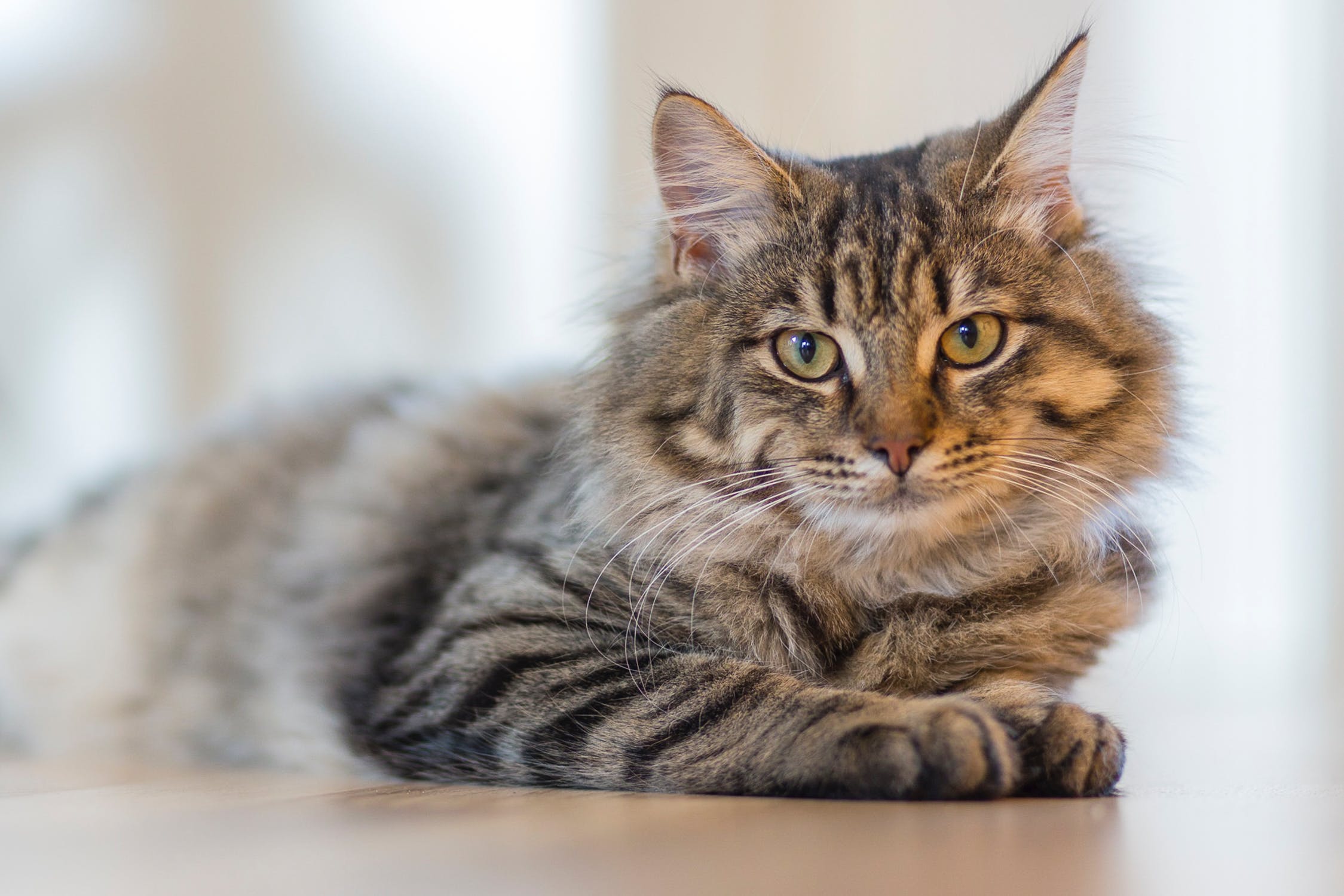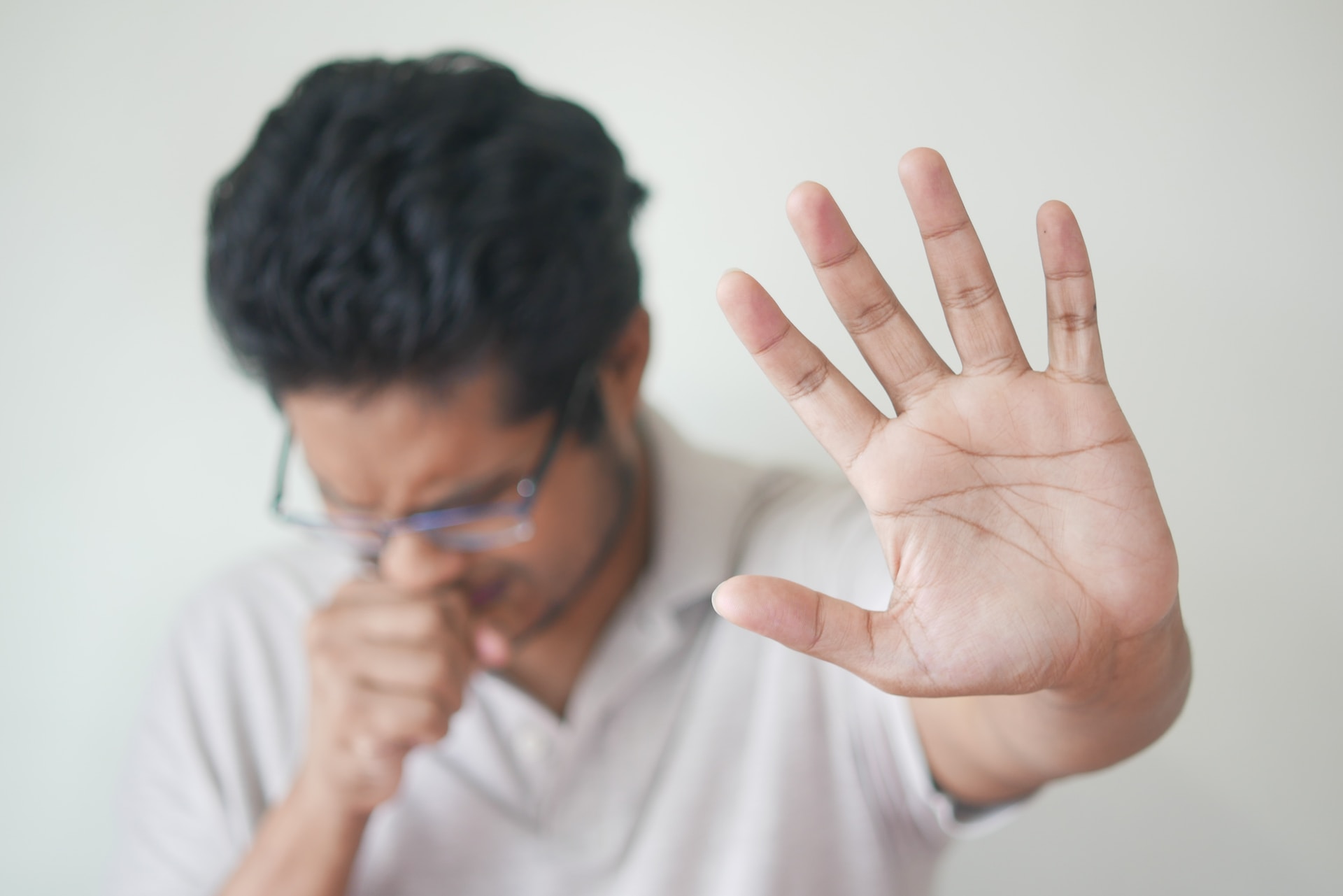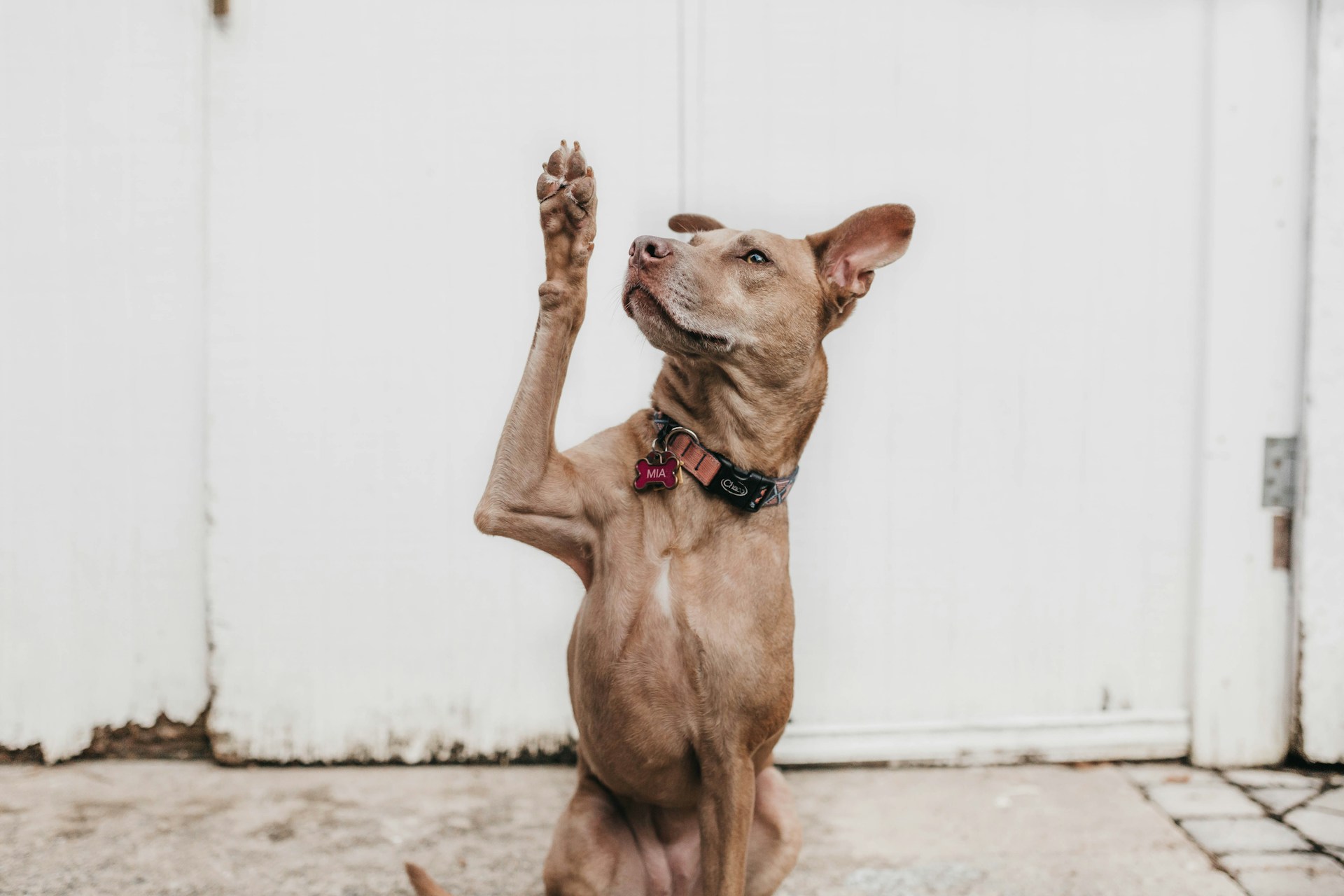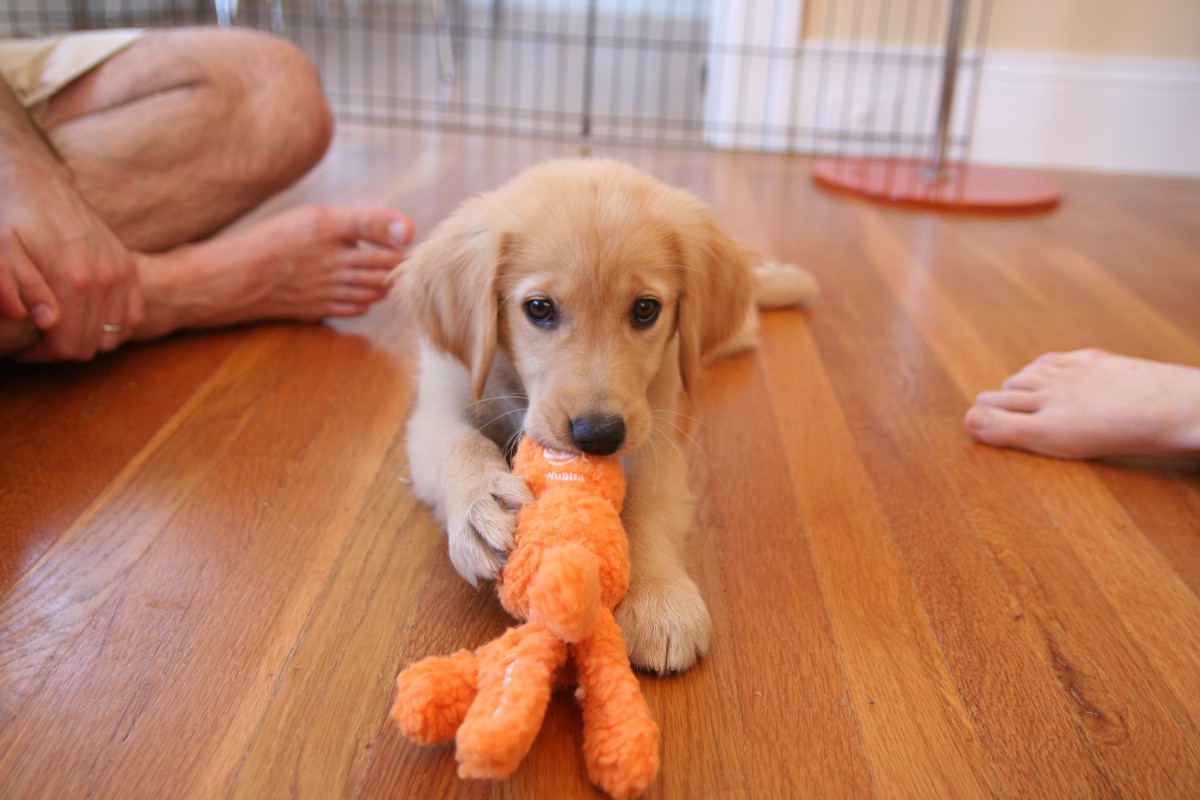
Having a new puppy is a wonderful experience bringing joy and excitement in our lives, as the number of our family members increases. As a puppy owner you may want to provide your pup with an environment as loving and as safe as possible, so that your paw friend can turn into a well-behaved, happy and confident adult dog. However, raising a dog may be challenging while your paw friend is still in a puppy phase and you may need to overcome some obstacles on the way.
We would like to give you some pieces of advice on how to properly address the most common puppy behavioral issues, what training approaches are likely to be most effective, and what you should avoid doing when raising and training a pup.
Tips on How to Discipline Your Puppy:
Start Training Your Pup as Soon as Possible
We want to clarify that actual puppy training, involving the performing of certain tasks, should not be conducted until the pup is at least 8 weeks old. More demanding tasks, i.e. mobility tasks, should not be required from your dog, until he/she gets 6 months old. However, basic obedience and socialization are essential for dogs to become well-behaved adults and relevant training can begin at the moment your pup enters your home.
Know Your Puppy
Each dog is different, regardless of the breed-related similarities. You may have red all information available about a certain breed, but until you know your dog as individual and understand his/her body language, you still may fail at training them. It is important for every owner to understand what motivates their puppy to perform a wanted behavior, i.e. most dogs are usually interested in food and treats, while other dogs are more interested in toys. Also, you may need to figure out your pup’s favorite flavor or favorite type of toys. There are different types of toys on the market based on their purpose (tug toys, chew toys...etc.), their material (rubber, wood, fabric, plastic..etc.) and size. Once you know what your dog is into, you will be able to use it as a great behavior management tool.
Make a Routine / Schedule
Although many of us may associate the word “routine” with “boredom”, dogs are likely to associate “routine” with something positive. Dogs love things to be predictable as predictability brings in them a feeling of safety. Also, you will be able to regulate the behavior of your pup easier after you make a schedule. Once your pup understands when he/she will eat, play, go for a walk, he/she will adjust to the routine. Your pup will be less likely to start jumping/chewing or showing any kind of excessive behavior, if he/she knows that at a certain time of the day he/she will be able to play or go outside to explore the environment. That is why making a schedule and sticking to it is really important when it comes to puppy training.
Potty Training
Potty training is logically connected to making a schedule. You should teach your pup at what time of the day you will go for a walk, where he/she will be able to relieve themselves. It is recommended that you walk your pup every 2-3 hours- right after you wake up, after play time and after your pup has eaten and drunk.
Show Your Puppy Who Is in Charge
If you want the process of disciplining your pup to succeed, you should win their respect and prove that your are the Alpha. Your intonation should be both friendly and confident so your pup will know that they have to listen you. It is also important, that you use your authority to require obedience not only during the training sessions, but anytime you give them a specific command. However, there are a few things you need to remember when you require your pup to show a certain behavior. We will list these things below.
Positive Reinforcement
As we mentioned above, you need to figure out what encourages your pup- is it a treat of a certain flavor, or a certain toy, and provide your pup with it every time they fulfill the given task. Even when you need to show your authority before your pup, you still want to ensure that they do not consider the respond to your commands an annoying responsibility. You may want to create a positive attitude in them, so that they connect task performing with something interesting, that they will be happy to engage in. Positive reinforcement can be divided into primary and secondary reinforcement. Primary reinforcement features everything that your pup needs for their survival- food, water, shelter. Secondary reinforcement can be paired with primary reinforcement and gradually replace it, i.e.: toys, praising, petting.
Keep the Sessions Short
Dogs, while still in the puppy phase, may be unable to focus on something for too long. Since they can get easily distracted, it is recommended that you keep the training sessions short and frequent and end them before your dog gets bored. The ability to keep your dog’s attention and their interest awake is crucial for the success of the training process.
Give Your Puppy Time
You should keep in mind that you are dealing with a pup, who is currently learning everything about the world and their place in it. Do not expect them to respond immediately to your commands and give them some time to react.
Patience
Logically we move to the next point- always be patient. Patience is the key to the success of all activities you will ever engage in.
Consistency
Another important word that you need to remember. Once you start training your pup or engaging in any kind of activities, you need to be consistent. Progress hides in the small steps that you make every day and the routine you follow.
Proper Timing
What does that actually mean? Every time you encourage your dog to perform a certain behavior, you need to use positive reinforcement right after your pup performs the task. Too early or too delayed rewarding will confuse your pup and he/she may not understand why you are giving them a treat/toy.
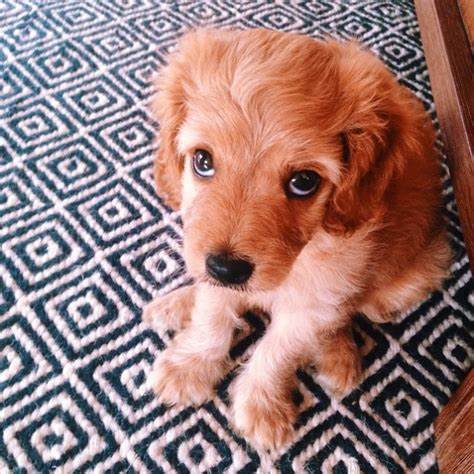
Tips on How to Address Some Common Puppy Behavioral Issues
Some common behavioral problems, that most puppies deal with are jumping on you or your guests, chewing shoes, furniture...or everything they are able to put in their mouth, biting while playing, whining when left alone and barking when they seek attention.
Redirect Your Puppy’s Attention
The easiest and effective way to prevent any type of unwanted behavior that your puppy shows, is to keep them busy and redirect their attention. You can give your pup an interesting chewing toy, that may stop him/her from chewing non-edible things. It is important for new owners to understand that mouthing is a part of each dog’s puppy phase. Instead of trying to prevent your pup from mouthing you can show him/her what things are good for chewing and redirect this behavior to the right objects. At the end, both you and your paw friend will be happy.
Stimulate Your Pup Physically and Mentally
Your pup can engage in physically and mentally stimulating games, that will help him/her spend the excessive amount of energy. Calm and relaxed dogs, who already have played and explored new objects, sounds and smells in their environment throughout the day are less likely to misbehave. They will be just too tired for that.
Basic Obedience Commands
You may need to start with basic commands like “sit”, “stay”, “down”, “drop”, and “come”. These basic commands may help you interfere with your pup’s unwanted behavior in a lot of situations and enables you to prevent potentially dangerous situations. A good example could be a situation when your pup is going to cross a busy boulevard. You can give the “sit” command, followed by the “wait” command. Once lights turn green and it is safe to cross the street/boulevard, you can continue walking and give your pup the “come” command. Every time your pup performs a command, you should reward them.
Recall
This command indicates the puppy’s ability to recognize his/her name and come to you when you call them. The easiest way to train your pup to respond to his/her name is to wait until he/she is not looking at you, then you should say his/her name, using a happy and bright intonation. Once your pup looks at you, mark the behavior with a cue word or a clicker and give them a reward. As we stated above, timing is important, and you need to be prompt. At the beginning you may want to practice the task in a distraction-free environment. Repeat the steps a few times throughout the day and then start adding more and more distractions. Turn on the TV, open the window so various sounds and noises from outside can be heard, start a conversation with a family member or a friend. After several repetitions your pup should be able to come to you every time you call him/her by name.
More Advanced Commands
Once your pup is able to recognize his/her name and respond accordingly when you call him/her you can try practicing a more advanced command- the “focus” command. Making an eye contact and being able to keep focusing on you may spare you many troubles while in public or having guests. This command can be applied to any situations, when your pup gets distracted by a moving object, another dog, or a person and starts misbehaving, i.e. barking, pulling on a leash, jumping on your guests...etc.
Same as the “recall” command, you may need to start practicing the “focus” command in an environment free of distractions. Call your pup by name and then say “watch me” or “look at me”. If your pup makes an eye contact after you gave the command, you can mark the behavior (with a cue word or a clicker) and give him/her a delicious treat. If your pup does not respond immediately, you can encourage him/her by waving the treats in front of his/her nose. Then start moving the treat to your face. At some point your pup may end up looking at you, as he/she is likely to want to keep the treats in sight. Once your pup looks at you, praise them or click to mark the behavior and give them a reward. Remember to mark the behavior right after your pup performed it and give a treat immediately. You may need to practice these steps several times, in order to reach the wanted results. Remember to use positive reinforcement and apply it in a timely manner. Gradually you can add more distractions and change the location to a more busy one, I.e. a park. Keep practicing around other animals and people to ensure that your pup has mastered the command.
How to Handle Separation Anxiety Problems
Puppies are likely to whine when left alone. This is why you may want to choose a spot in your home, that is moderately busy, so that your pup will not feel isolated. However, you may not want the spot to be too crowded as well, as some louder noises may provoke barking or anxiety. Also, you should pay attention to the temperature of the place, and ensure that it is neither cold, nor hot and most importantly that there is no draft. After you have chosen the perfect spot for your pup, you can start training him/her to get used to your absence. The most simple way to do this is to go out of the room for 1-2 seconds. Then go inside again. Make sure that your pup is calm and relaxed, before you leave the room again. Increase the duration gradually by changing the intervals, i.e. go out for 4-5 seconds, then for 2-3 seconds, then for 5-6 seconds. Keep practicing and increasing the duration, until your pup starts feeling comfortable with your absence.
Consult With a Trainer or Enroll in a Course
If you think that you will benefit more from the assistance that professionals offer, you can contact a training organization, or a trainer. Services of many training organizations include puppy training programs, so they can train your pup the basics. Some of the available options often feature Board and Train (where you drop off your pup at the training facility and pick it up later on the same day, after a week or several weeks, based on the program), Puppy Courses and Private Consultations (in your home, at the training facility or via Zoom).
If you think that you want to train your pup yourself, as you want to strengthen your bond and to address particular issues only, but you still need structured lessons, you can enroll in an online puppy training course. During the training process you are likely to be supported by the school’s trainers via different channels like email, live chat, Zoom or phone.
Both options have their advantages and disadvantages and you should choose the one that will suit you most. Factors that you may want to consider are: costs, personal attention, professional experience, time, energy and commitment required.
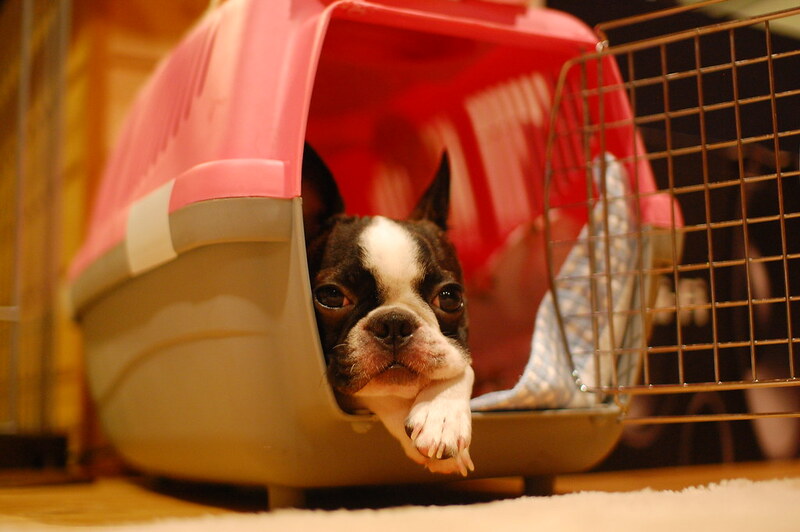
What You Should Avoid Doing When Disciplining Your Pup
No Punishment
As we stated many times, punishment, as well as any acts of verbal and physical aggression will only traumatize your pup instead of bringing results. Do not yell or try to hit your pup, even if you are angry at him/her. Always remember, that it is currently learning and you should be understanding and patient.
Do Not Encourage Your Pup When He/She Misbehaves
A common mistake that many new owners make is to give their pup what he/she wants only to stop him/her whining. By doing this you only encourage your pup to keep whining anytime he/she wants to eat, play or when he/she just is seeking your attention. Reward your pup only when he/she behaves properly.
Do Not Pull Your Hand Away
If you are in the middle of a game and your pup seems to be a little more excited and starts nipping, do not try to pull your hand away. This may have the opposite effect and motivates your pup to keep playing even more enthusiastically. It would be more effective if you say a cue word like “No”, then stop playing with your pup for a minute or two, until he/she calms down and then resume the play session. If your pup starts barking or whining, ignore him/her, until he/she calms down.
Having a new puppy brings both joy and responsibility in our lives and we should be thoughtful and patient when raising and training our new family member.


